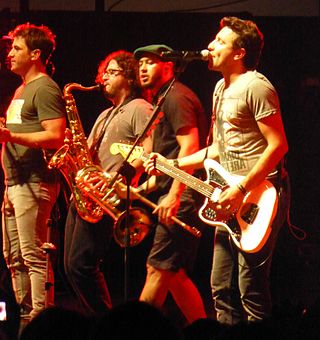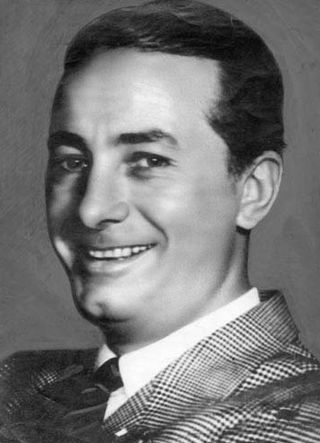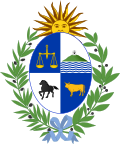
The most distinctive music of Uruguay is to be found in the tango and candombe; both genres have been recognized by UNESCO as an Intangible Cultural Heritage of Humanity. Uruguayan music includes a number of local musical forms such as murga, a form of musical theatre, and milonga, a folk guitar and song form deriving from Spanish and italian traditions and related to similar forms found in many American countries.

Tango is a style of music in 2
4 or 4
4 time that originated among European and African immigrant populations of Argentina and Uruguay. It is traditionally played on a solo guitar, guitar duo, or an ensemble, known as the orquesta típica, which includes at least two violins, flute, piano, double bass, and at least two bandoneóns. Sometimes guitars and a clarinet join the ensemble. Tango may be purely instrumental or may include a vocalist. Tango music and dance have become popular throughout the world.

Candombe is a style of music and dance that originated in Uruguay among the descendants of liberated African slaves. In 2009, the United Nations Educational, Scientific and Cultural Organization (UNESCO) inscribed candombe in its Representative List of the Intangible Cultural Heritage of Humanity.
In Spanish, the term Porteño means "port city person". It is mainly used to refer to the residents of Buenos Aires, Argentina, but also from other port cities such as El Puerto de Santa María, Spain; Valparaíso, Chile; Mazatlán, Veracruz, Acapulco and Tampico, Mexico; Puerto Cabello, Venezuela; Puerto Colombia, Colombia; Puerto Suárez in Bolivia; Puerto Cortés, Honduras; Puntarenas, Costa Rica, and Montevideo, Uruguay.

Omar Ruben Rada Silva is a Uruguayan percussionist, composer, singer and television personality.
The Buenos Aires Carnival is an annual event that takes place during the Carnival festivities, usually at the end of February, on the streets of Buenos Aires, Argentina. The two-day event features murga parades, colourful costumes, water bombs and many other amusement activities.
"Matador" or "El matador", is a song written by Flavio Cianciarulo, bass player of Los Fabulosos Cadillacs, a rock band from Argentina. It was first released in their 1993 album Vasos Vacíos and it is considered their signature song since the song topped the charts all across Hispanic America.

Uruguayan tango is a rhythm that has its roots in the poor areas of Montevideo around 1880. Then it was extended to other areas and countries. As Borges said: "...tango is African-Montevidean [Uruguayan], tango has black curls in its roots..." He quoted Rossi, that sustained that "...tango, that argentine people call argentine tango, is the son of the Montevidean milonga and the grandson of the habanera. It was born in the San Felipe Academy [Montevideo], a Montevidean warehouse used for public dances, among gangsters and black people; then it emigrated to underworld areas of Buenos Aires and fooled around in Palermo's rooms..." This also implies that different forms of dance were originated in the neighborhoods of Montevideo, Uruguay in the last part of the 19th century and in the early 20th century that was particular from that area and different from Buenos Aires. It consists of a variety of styles that developed in different regions of Argentina and Uruguay.

Laura Ana "Tita" Merello was an Argentine film actress, tango dancer and singer of the Golden Age of Argentine Cinema (1940–1960). In her six decades in Argentine entertainment, at the time of her death, she had filmed over thirty movies, premiered twenty plays, had nine television appearances, completed three radio series and had had countless appearances in print media. She was one of the singers who emerged in the 1920s along with Azucena Maizani, Libertad Lamarque, Ada Falcón, and Rosita Quiroga, who created the female voices of tango. She was primarily remembered for the songs "Se dice de mí" and "La milonga y yo".

Afro-Argentines are Argentines of primarily Sub-Saharan African descent. The Afro-Argentine population is the result of people being brought over during the transatlantic slave trade during the centuries of Spanish domination in the region and immigration from Africa.

No Te Va Gustar, also known by their initials NTVG, is an Uruguayan rock band formed in 1994 in Montevideo. The group consists of lead vocalist and guitarist Emiliano Brancciari, bassist Guzmán Silveira, drummer Diego Bartaburu, trumpeter Martín Gil, trombonist Denis Ramos, tenor saxophonist Mauricio Ortiz, guitarist Pablo Coniberti and keyboardist Francisco Nasser. Considered as the most popular and international Uruguayan rock band, and one of the most recognized Latin American groups, No Te Va Gustar has released ten studio albums via Bizarro Records, four becoming a chart-topper in their native country.

El León is the seventh studio album by the Argentine ska and reggae band Los Fabulosos Cadillacs. Released in 1992, the album combines multiple genres and incorporates Caribbean rhythms as well as salsa, calypso and reggae influences. It is a notable album in the history of Argentine rock. In 2007, the Argentine edition of Rolling Stone ranked it 21 on its list of "The 100 Greatest Albums of National Rock".

Gabino Ezeiza, nicknamed Negro, was an Argentine musician. Ezeiza was one of the greatest performers in the art of the payada. He became renowned, both in his native land and in Uruguay, after a memorable encounter with Oriental payador Juan de Nava, who carried at the time a certain halo of invincibility. This celebrated contest was held in the city of Paysandú on July 23, 1884, in front of one of the largest crowds ever to gather for a payada duel.

En Vivo en Buenos Aires Released in 1994 is the ninth album and first live one from the Argentine ska reggae Latin rock band Los Fabulosos Cadillacs. It was well received and earned a gold disc.

Afro-Uruguayans are Uruguayans of predominantly African descent. The majority of Afro-Uruguayans are in Montevideo.

Carnival in Uruguay is a festival that takes place every year in Uruguay from mid January to late February. It is considered to be the longest carnival in the world. The Carnival draws root from candombe, Murga and tablados, which are forms of expression of Uruguayan culture through dance and music. From its conception, the Uruguayan Carnival has evolved into a dance parade in which different comparsas, groups of street performers in Latin American festivals, play the drums and dance at the "Desfile Inaugural del Carnaval" and "Desfile de Llamadas" parade. The biggest carnival celebrations are in the capital Montevideo and can last up to 40 days. They involve a series of cultural events such as dance parades in the streets, street stages called "tablados" and an artistic contest in the "Teatro de Verano" in Montevideo.
Berta Pereira Majó is a Uruguayan percussionist, dancer, and actor who specializes in Afro-Uruguayan themes. In 1995, she founded the group Berta Pereira y las Comadres, which focuses on Afro-Uruguayan music and folklore. The band is well known for their candombe style of music and their participation in Memoria para armar, a musical performance and dramatic reading of testimonies by women imprisoned under the Uruguayan military dictatorship in the 1970s and 1980s.

Ben Molar was an Argentine author, composer, musical producer, and talent scout. He created the National Day of the Tango, held annually on 11 December, placed bronze plaques on all 40 corners of Calle Corrientes and produced an interdisciplinary artistic project that combined art, poetry, and music to promote Argentine tango.

Eduardo Pedro Lombardo, nicknamed Edú and Pitufo (Smurf), is a Uruguayan musician, composer, and singer. He stood out as a teenager as a member of several murgas in his country, in addition to accompanying renowned artists as a percussionist. Since 2007 he has developed a distinguished career as a soloist.

Eduardo Armani was an Argentine violinist and conductor.
![Araca La Cana [es], an Uruguayan murga group performing on the occasion of the inauguration of Uruguayan president Tabare Vazquez, Montevideo, March 2005 Murgas (Vazquez, Marzo 2005 -1).jpg](http://upload.wikimedia.org/wikipedia/commons/thumb/e/ea/Murgas_%28Vazquez%2C_Marzo_2005_-1%29.jpg/220px-Murgas_%28Vazquez%2C_Marzo_2005_-1%29.jpg)
















